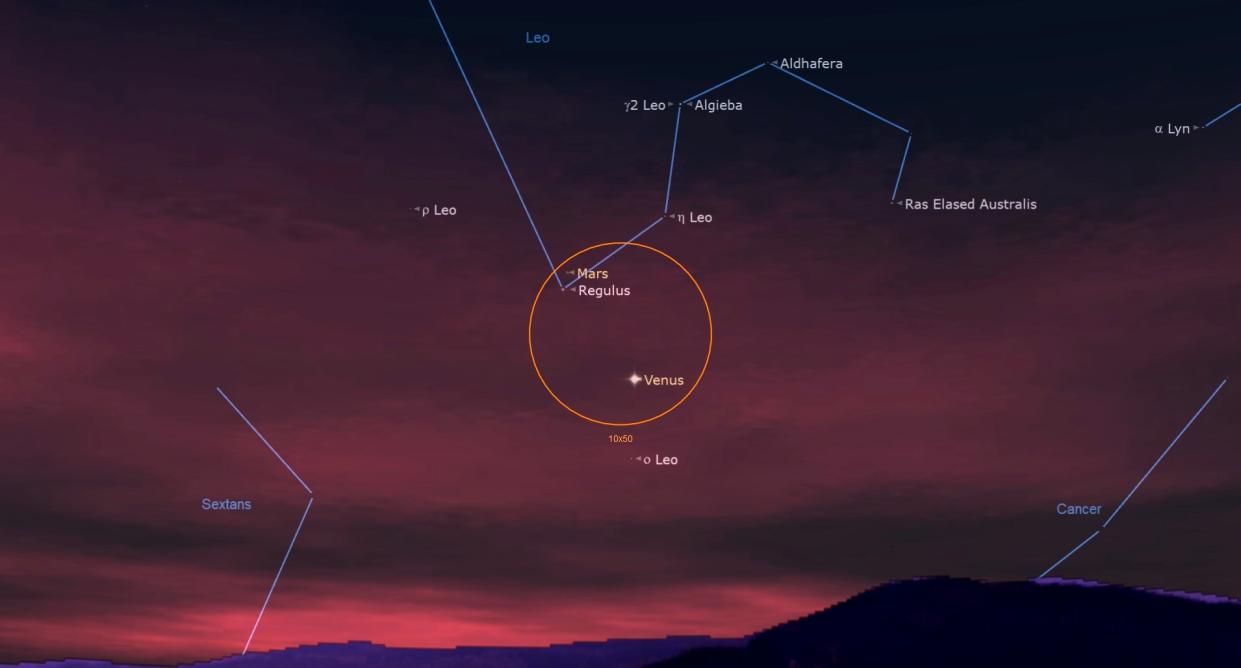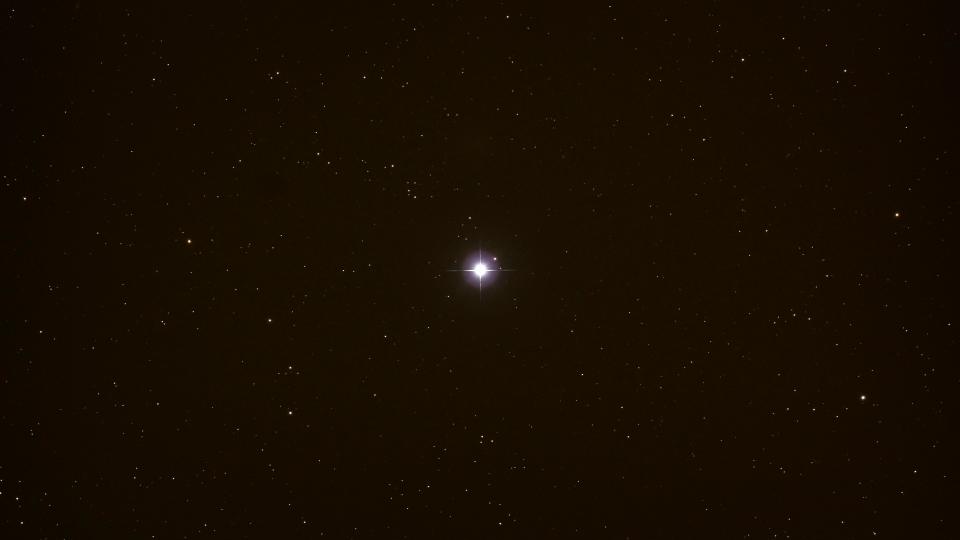See the Red Planet Mars shine beside the blue star Regulus tonight

The night sky makes for an interesting pairing of targets this evening (July 10).
As soon as the sun sets, look to the western skies to see the Red Planet, Mars, shining steadily above the twinkling blueish star Regulus. The pair will set shortly after 10 p.m. ET (0200 GMT on July 11), so be sure to get out as soon as it gets dark.
To find Mars and Regulus, it might be easiest to first spot one of the early evening sky's brightest objects: Venus. Venus is still quite bright in the night sky, coming off its brightest appearance on July 7. Look for a large, bright orb to the west; you can't miss it. Once you've found Venus, look just above and to the left of it to find Regulus. Mars will be just above the star, not incredibly bright but still easy to make out as a steady orange light.
Related: Mars and Venus leave the night sky this month. Here's how to say goodbye
TOP TELESCOPE PICK:

Looking for a telescope to see Mars, Regulus or anything else in the night sky? We recommend the Celestron Astro Fi 102 as the top pick in our best beginner's telescope guide.
Regulus, also known as Alpha Leonis, is the brightest star in the Leo constellation, the Lion, in addition to being one of the brightest stars of the Northern Hemisphere's night sky. Regulus will be at around magnitude +1.4, making it fairly easy to see with the unaided eye next to Mars shining at magnitude +1.7. (The lower the magnitude, the brighter the object appears to our eyes.)
In the night sky, Regulus appears as a single blue-white star, but is actually part of a quadruple star system. A binary pair made up of an orange dwarf and a red dwarf lurk nearby at 4,200 Earth-sun distances, while researchers believe a dead star known as a white dwarf could also be located close by.

Regulus is something of an oddball, rotating much faster than most stars at 700,000 mph (1.1 million kph) at its equator. For comparison, the sun's rotation is about 4,500 mph (7,242 kph) at its equator. The star's spin is so intense that it bulges out in its center to a diameter of about 4.2 times that of Earth's sun. If Regulus spun just 10% faster, it would rip itself apart.
If you are hoping to catch a look at Mars or Regulus up close, our guides to the best telescopes and best binoculars are a great place to start.
And if you're looking to snap photos of Mars or the night sky in general, check out our guide on how to photograph the planets, as well as our best cameras for astrophotography and best lenses for astrophotography.
Editor's Note: If you snap an image of Mars near Regulus and would like to share it with Space.com's readers, send your photo(s), comments, and your name and location to spacephotos@space.com.

